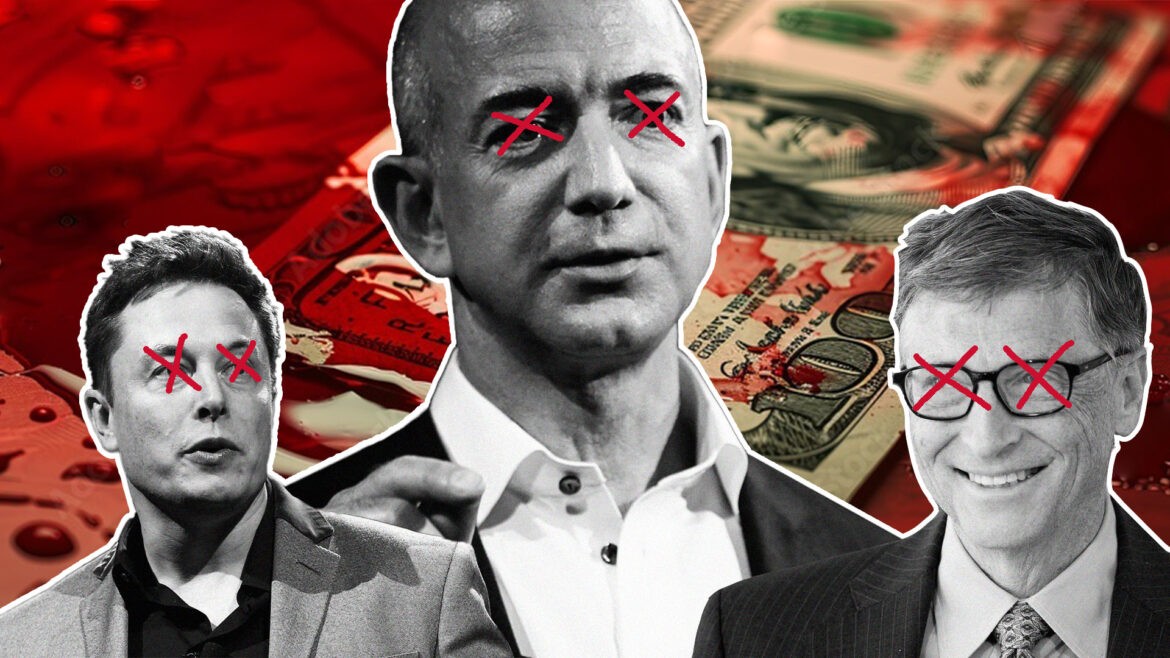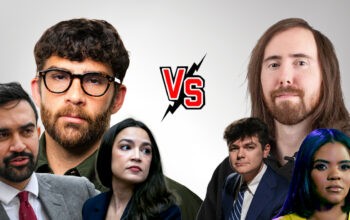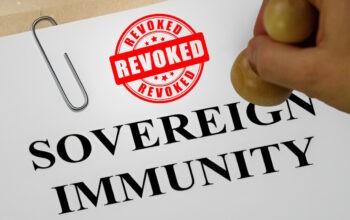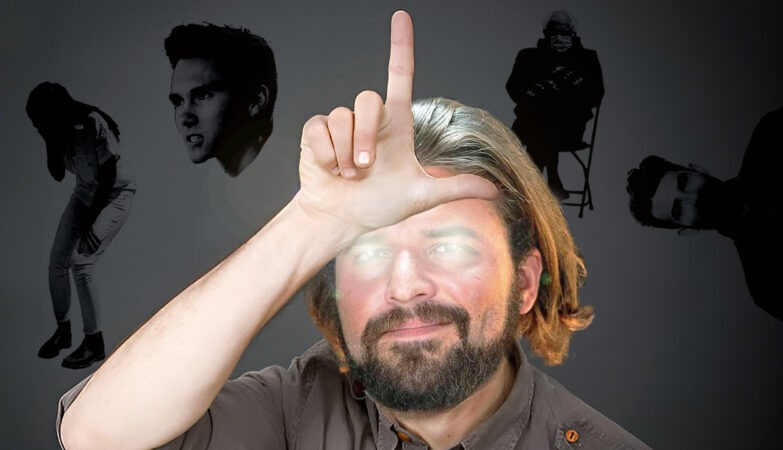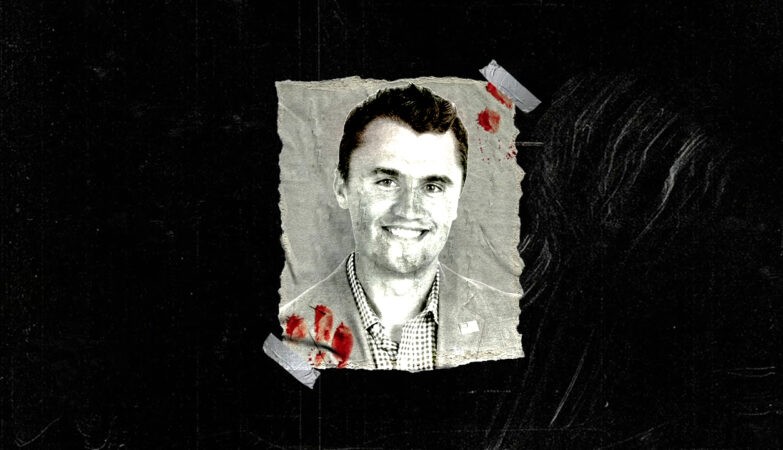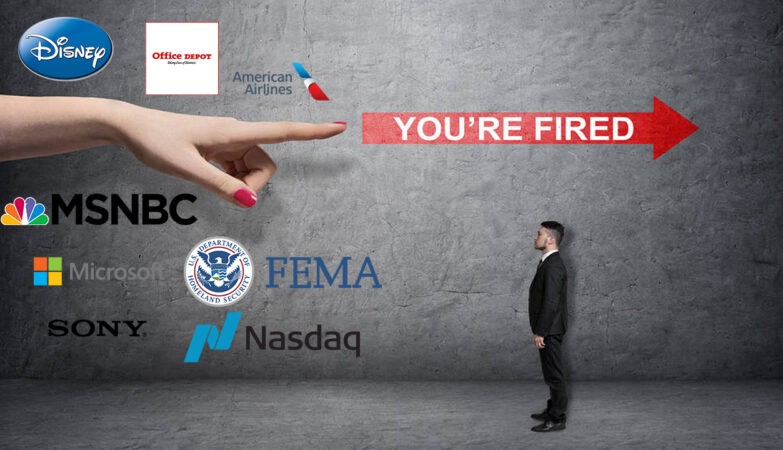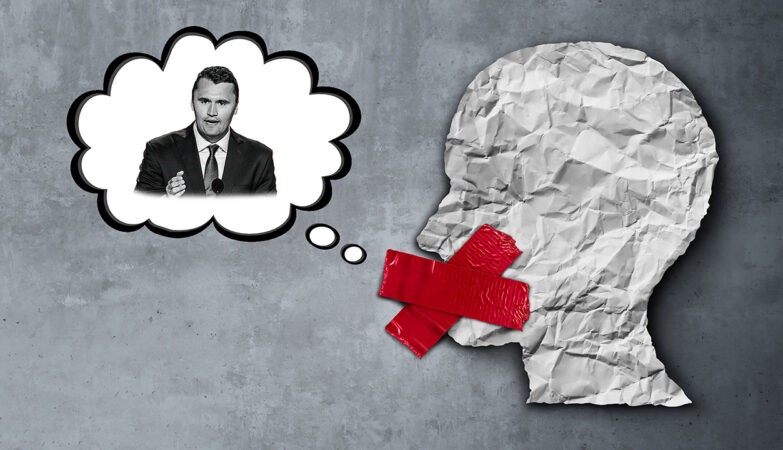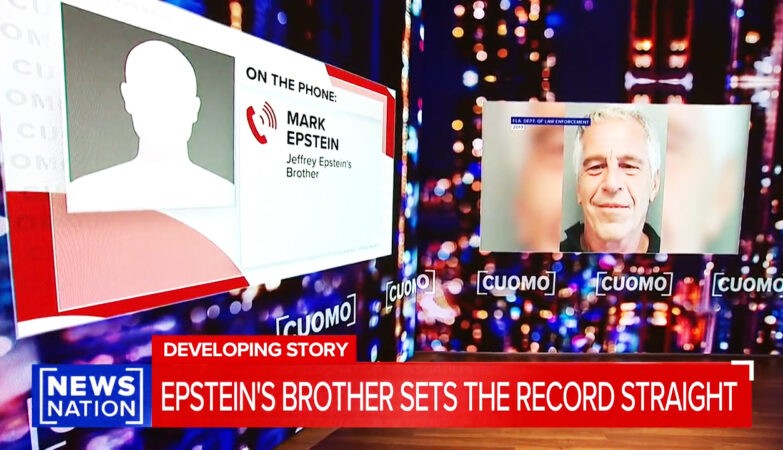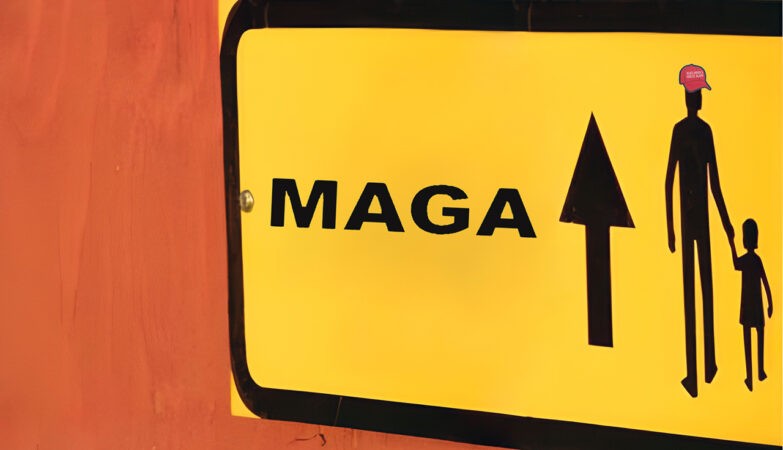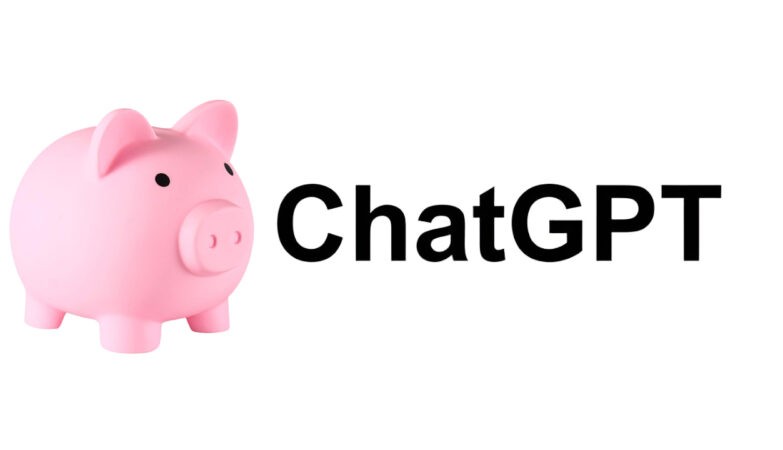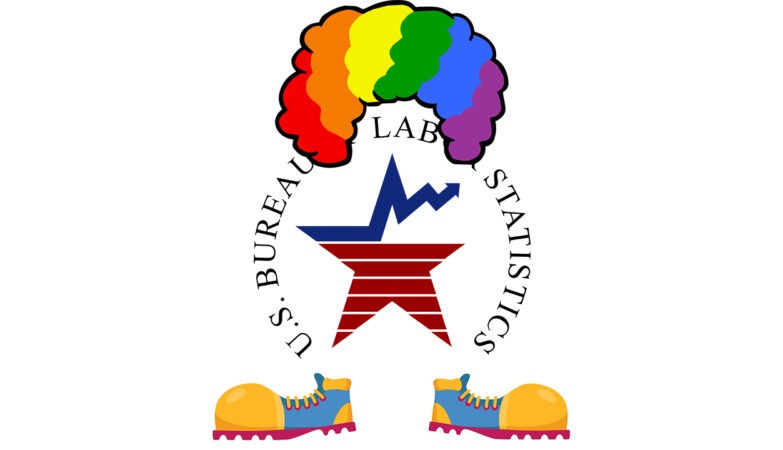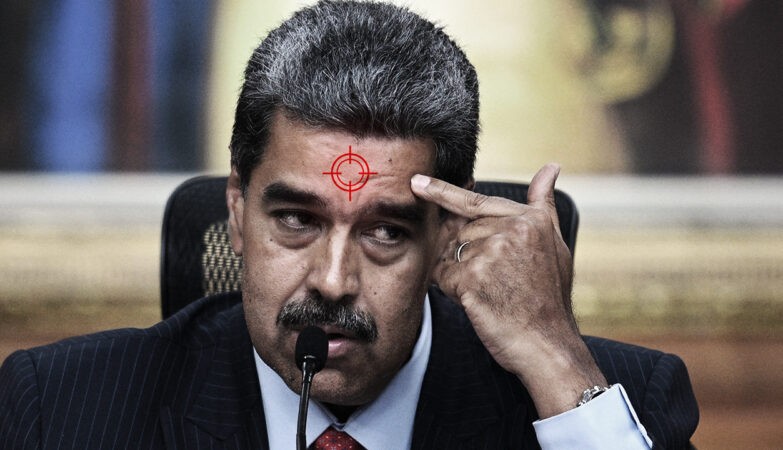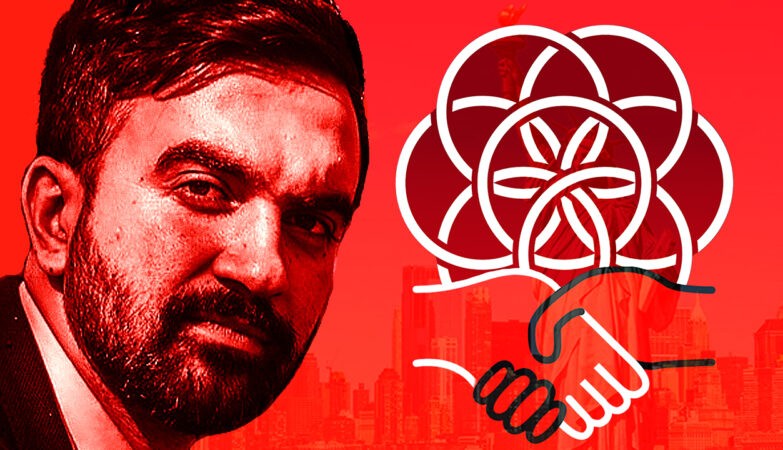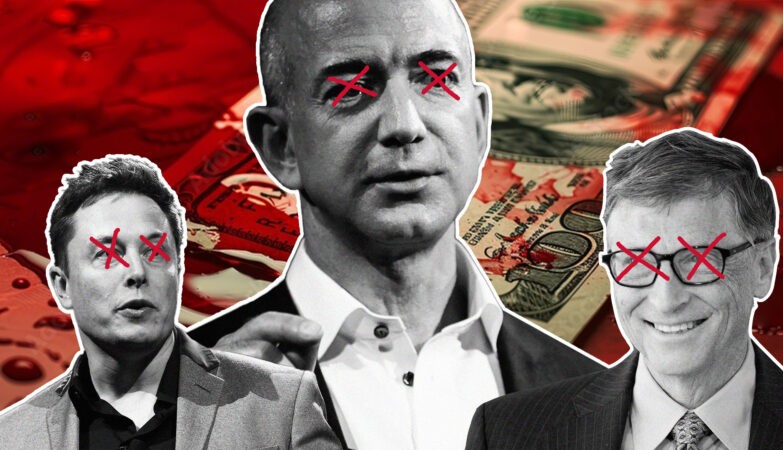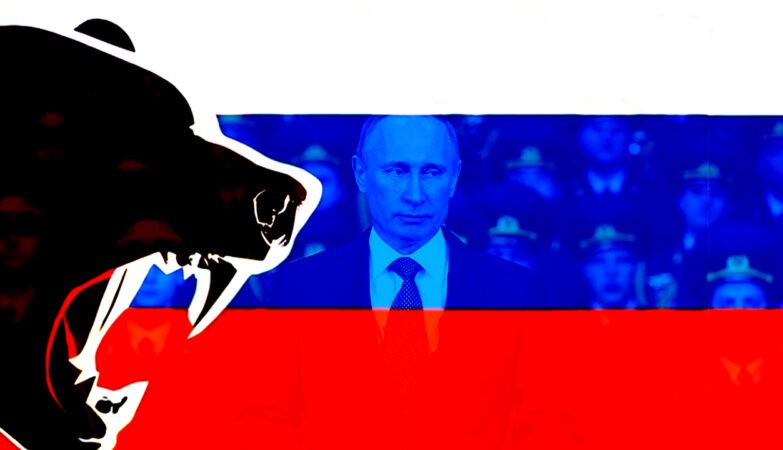Wealth inequality has been in the news very frequently over the past couple of years. First off, let’s get something straight: wealth inequality, in and of itself, is not inherently bad. On the contrary, it can spur innovation and investment. For example, we can all agree that a Walmart cashier does not deserve to have as much wealth as Bill Gates.
However, wealth inequality is only beneficial if two conditions are met. First, the people who control the majority of the wealth must not abuse it. Second, the people at the bottom must have a decent standard of living. Unfortunately, neither of these conditions is currently being met. Incomes for people at the bottom have been declining year after year, while incomes for the wealthiest individuals in society are soaring.
Additionally, many wealthy individuals misuse their wealth in harmful ways. Some bribe politicians and business partners, extort others, commit fraud, launder funds, make highly risky investments, or provide risky loans that destabilize our economy. These actions exacerbate the problem and make wealth inequality a pressing issue.
At present, wealth inequality is a significant concern, arguably one of the biggest challenges we face as a society. So, how should we address it?
The gap between the top 10% and the middle class is over 1,000%; that increases another 1,000% for the top 1%. Per PolitiFact and others, in 2011 the 400 wealthiest Americans “have more wealth than half of all Americans combined.”
Usually, the solutions put forth by politicians are so complex no one can understand them, let alone implement them. Politicians think to be acceptable; a solution must be complex. Not true. Sometimes the right solution is simple and maybe even counter intuitive or hard to implement.
Excessive Profits

Consumers pay too much for products and services that provide excess profits to the rich. There should be better transparency on the real cost of products and services. We already have labels for nutrition and the country where the product is made.
A good proposition is adding more information to the label. Here are the items that could be placed on a label on all products and disclosed for all services:
- The actual percent of the cost that is contributed toward profit. If we knew this, most of us would not purchase anything with excessive mark up. I think 10% or less is a fair profit.
- The salaries of the CEO, the Chairman of the Board, the CFO and the salary of the lowest paid employee. It must include all the perks, stock options and golden parachutes.
- The percentage of the product or service that is from outside of the U.S.. Many of us will buy American is we know the product is actually made in America.
Excessive Inheritance

We all know people who are born with a “silver spoon” in their mouth. It gives them a substantial head start in life with access to the best education and employment. The rich just keep getting richer and so do their kids. According to the Institute for Policy Studies, “over 60 percent” of the Forbes richest 400 Americans “grew up in substantial privilege”.
A decent proposition which requires caution is that the government establish limits on inheritance such as $1M.
Excessive Wealth
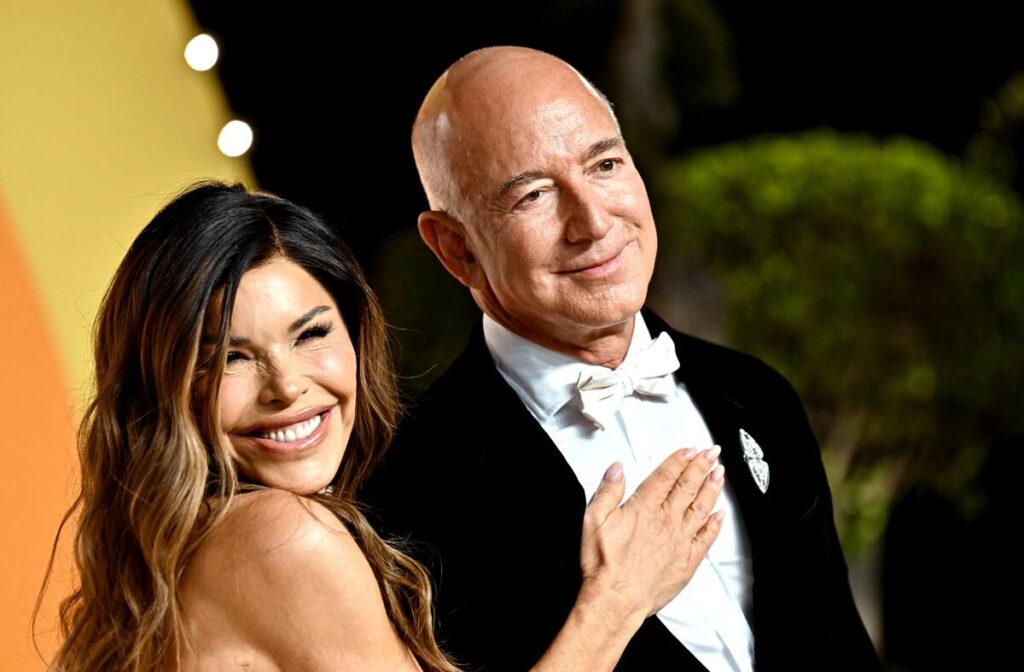
The media reported that the top wealthiest 1% possess 40% of the nation’s wealth; the bottom 80% own only 7%.
There are propositions that the government can establish limits on wealth. Some estimate a cap of ten million, others up to thirty million.
Excessive Income and Salaries
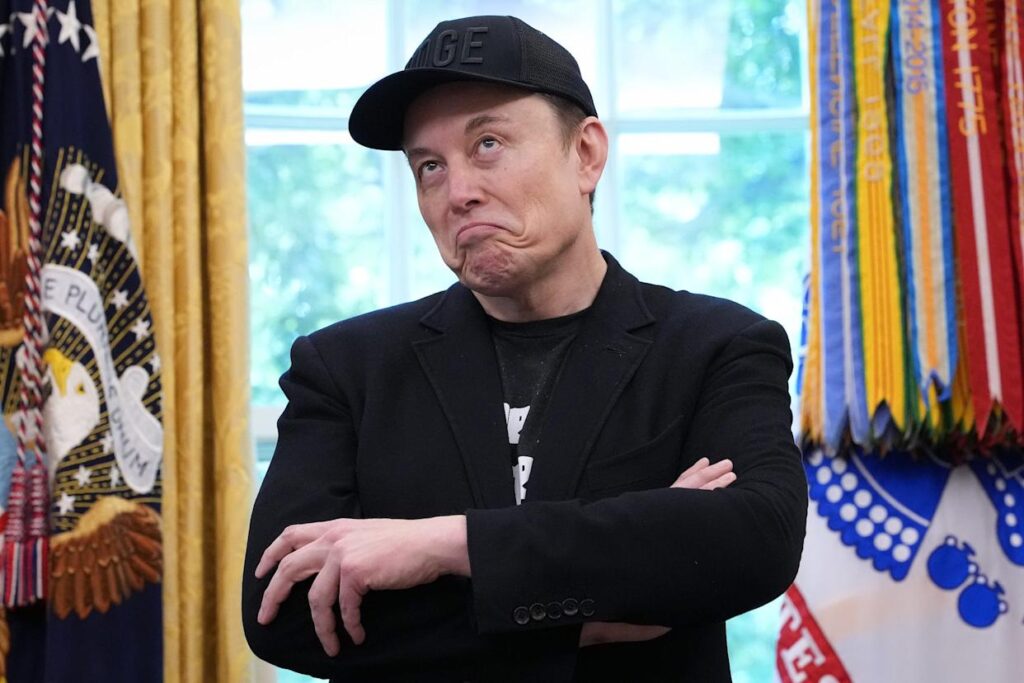
According to reports, the richest 1% in the U.S. now have more additional income than the bottom 90%. Further more, the average employee needs to work more than a month to earn what a CEO earns in one hour.
An interesting proposal is that the government establish a ratio between the salary of the CEO and the lowest paid employee. It must include all the perks and stock options.
- If the CEO gets a raise, everyone must get a raise.
- All for-profit companies must have profit sharing.
While there are many propositions like the ones listed above and more such as improving the education system, establishing a universal basic income (UBI), improving the healthcare system, reforming the prison system, scaling back intellectual property rights, licensing laws, ending financial bailouts, corporate welfare, and pursuing anti-inflationary monetary policies, there really are only two real solutions which solve the crux of the problem in my humble opinion.
Those are more aggressive taxes on the highest earners or a revolution.
Increased Taxes On the Elite Class
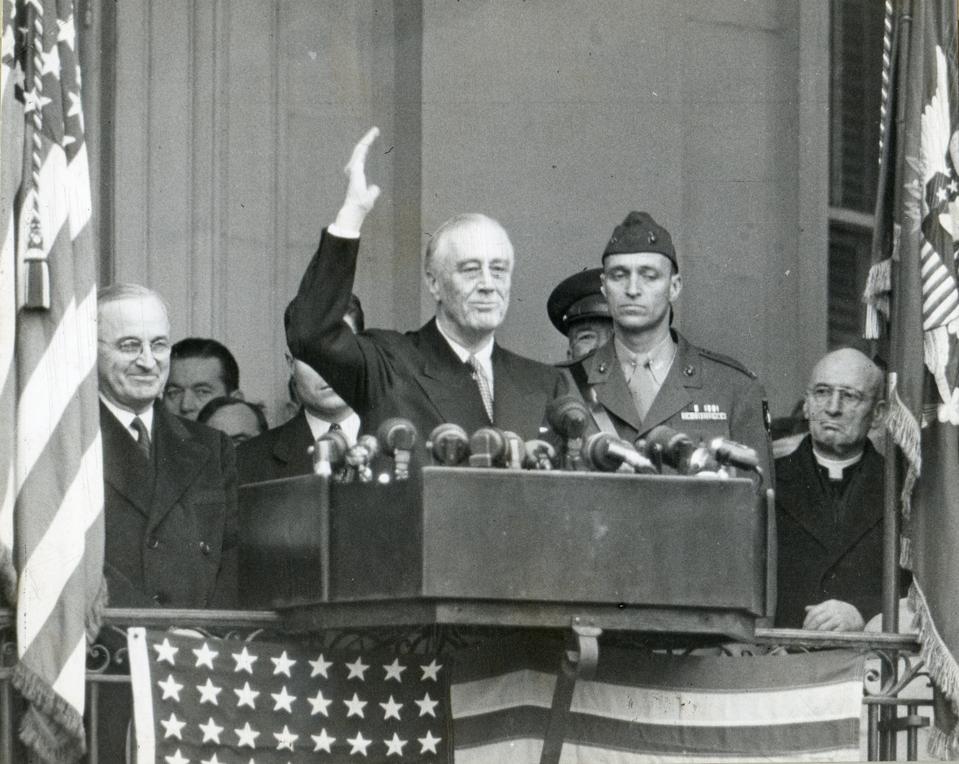
Wealthy people in America screamed and yelled when FDR said he would do it, claiming a hike from 25% to 90% would crash the economy, but instead that top tax rate kicked off the first middle class to encompass more than half a nation’s population in world history.
“Succession” is over, but spoiled, entitled billionaire man-children are still very much with us, running social media companies, owning newspapers and television networks, and funding politicians and judges who then keep their taxes low and regulations minimal.
America’s billionaires (and soon to be trillionaires) pay an average of around 3.1% as their functional income tax rate; as a result, America is the most unequal developed society in the world. The last time severe poverty and extravagant wealth coexisted in such extremes as today in this country was during the 1920s and 1930s.
The last time we saw the consequences of such inequality was during the Republican “Roaring ‘20s” 100 years ago, when Warren Harding dropped the top income tax rate from 91 percent to 25 percent, the morbidly rich openly bought our politicians, and gangs whose names are still known today roamed the country robbing and killing with impunity.
Franklin D. Roosevelt’s New Deal put an end to all that, and we need to repeat his example today.
FDR raised the top income tax bracket from 25 to 90 percent. Wealthy people in America screamed and yelled, claiming it would crash the economy, but instead that top tax rate kicked off the first middle class to encompass more than half a nation’s population in world history.
As Roosevelt noted in 1936:
“A number of my friends who belong in the very high upper brackets have suggested to me on several occasions of late, that if I am reelected president, they will have to move to some other nation because of high taxes here.
“Now, I will miss them very much…” (audience breaks into laughter)
FDR created America’s first widespread middle class with a combination of high taxes on the rich and strong unions for working class people. He broke the politically corrupt power of organized wealth for two generations.
The people who were obscenely rich throughout the era from the 1930s to the 1980s had mostly inherited their money from their 19th century Gilded Age ancestors (the Rockefellers, Vanderbilts, DuPonts, Carnegies, etc.), because the combination of the 90% income tax bracket and union demands for meaningful wages kept inequality at reasonable levels.
Rich people were still rich, but that top income tax bracket combined with the power of unions kept the average CEO from taking much more than 30 times what their lowest-paid worker made every year. (Today, some CEOs make more than a thousand times what their workers make.)
FDR’s and LBJ’s social safety nets caught Americans before they could fall into the dire poverty that characterized earlier eras when Republicans ran the show. Social Security and unemployment benefits — both rolled out by FDR in the 1930s — lifted the elderly and the jobless out of poverty, and LBJ’s Medicare and Medicaid (1960s) kept Americans healthy.
The result of this was that crime went down and lifespans increased. When the grinding inequality of the Roaring ‘20s and the Republican Great Depression went away in the 1940s and 1950s, the crime sprees and hate-promoting demagogues went with it. Working people with decent wages and benefits, after all, have neither the time nor the need to engage in criminal activity.
Corporate executives lived and worked in normal — albeit upscale — neighborhoods (watch an episode of Bewitched or The Dick Van Dyke Show from the 1960s to see the homes Madison Avenue executives and media bigwigs lived in), and workers made enough to sustain a decent lifestyle.
Nonetheless, the morbidly rich campaigned relentlessly to take us back to the oligarchic 1920s, demanding tax cuts and union-busting. They funded media campaigns, think tanks, publications, judges and politicians.
In 1981 they got their guy into office; Reagan dropped the top tax rate all the way down to 27% and destroyed the nation’s air traffic controllers union as his opening salvo in the modern-day Republican War Against Workers.
Reaganism kicked off a 42-year-long explosion of wealth at the very top of our economic hierarchy, making today’s billionaires richer than the pharaohs. They compete with each other to see who can own the largest private jets and mega-yachts, multiple mansions all over the world, private islands, and even their own spaceships.
Simultaneously, the middle class began its collapse from two-thirds of us in 1980 all the way down to today’s 45 percent (and today it takes two incomes to sustain the same middle class lifestyle that could be done with just one when Jimmy Carter was president).
So, here we are in a situation much like the one that FDR faced when he first came into office in 1933. Homelessness stalks the nation; a handful of morbidly rich individuals own more wealth than the bottom half of Americans; violent crime is at Bonnie and Clyde levels; and workers are terrified of their employers, who force them to sit through anti-union indoctrination sessions or lose their jobs.
To solve this crisis, we must gather and gain the political strength and will to once again raise the top income tax rate up to 90%; to overturn the Taft-Hartley Act and restore the right to unionize without interference; and to strip the poison of big money out of our political system.
The morbidly rich will squeal at even the mention of these tried-and-tested solutions, just like they did in the 1930s. They’ll warn that the country will collapse, or that communism will take us over and we’ll become Venezuela or Cuba. They’ll say that the “job creators” will go on strike like in an Ayn Rand novel and take the economy with them to Gault’s Gulch.
And, like FDR, we need to call them on their bullshit.
As President Roosevelt once told America:
“In 1776 the fight was for democracy in taxation. In 1936 that is still the fight. Mr. Justice Oliver Wendell Holmes once said: ‘Taxes are the price we pay for civilized society.’ One sure way to determine the social conscience of a government is to examine the way taxes are collected and how they are spent. And one sure way to determine the social conscience of an individual is to get his tax-reaction.”
Roosevelt noted that as society became more modern and complex, the demands on government increased along with the need to pay for its services through taxes. The need for our commons had expanded as our population and our technologies grew.
“But,” he noted, “I am afraid we have many who still do not recognize their advantages and want to avoid paying their dues.
“It is only in the past two generations that most local communities have paved and lighted their streets, put in town sewers, provided town water supplies, organized fire departments, established high schools and public libraries, created parks and playgrounds—undertaken, in short, all kinds of necessary new activities which, perforce, had to be paid for out of taxes.”
He framed the need to raise taxes on the morbidly rich into the 90% region (between 1932 and 1936 he cut income taxes on people making less than $50,000 a year) as a patriotic thing to do.
It was, Roosevelt claimed, in the finest of American traditions:
“Ever since 1776 that struggle has been between two forces. On the one hand, there has been the vast majority of our citizens who believed that the benefits of democracy should be extended and who were willing to pay their fair share to extend them. On the other hand, there has been a small, but powerful group which has fought the extension of those benefits, because it did not want to pay a fair share of their cost.”
And that small but powerful group had more than their share of front men back then — the Fox “News” hosts of that day — who claimed that giving workers power, or raising taxes on the morbidly rich, was somehow against the natural order of things. That it would “distort” the nation’s economy and end CEOs ability to run their businesses, leading to either communism or economic disaster.
Again, FDR took the truth right to them:
“You would think, to hear some people talk, that those good people who live at the top of our economic pyramid are being taxed into rags and tatters. What is the fact? The fact is that they are much farther away from the poorhouse than they were in 1932. You and I know that as a matter of personal observation.”
When you tax billionaires at 90%, they’re still fabulously rich and you have the resources to rebuild a healthy and happy middle class across the nation.
We did it before, and the result was the creation of the world’s first and largest middle class, a life expectancy never before seen in all of history, and a level of peace and prosperity that held its own until Ronald Reagan took a meat-axe to it.
We can do it again. If we want to preserve our nation, in fact, we must do it again.
Civil War
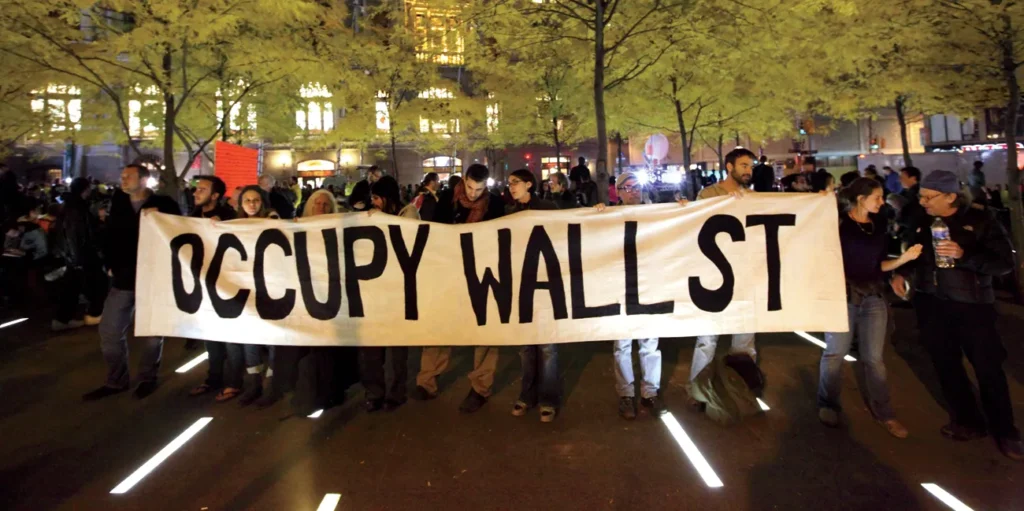
Remember the “Occupy Wall Street” movement? Theirs was a protest against the “One Percent.” However, the One Percenters begged to differ. They have responded with a revolution of their own, a revolution from above, the one currently under way in the United States.
The objective of the revolution is to ensconce and enhance the power of the One Percent. Why? So that they could never be threatened, they hope. Viewed in this light, the revolutionary fury evident in America’s cities manifests that desire.
Tactically, the best defense is offense. Since the one percent were called out as the source of all evil in the United States, they responded with a revolution of their own.
Who are the One Percent? They are America’s rulers. They are the billionaires, Big Tech (or, really, Big Anything), Wall Street bankers, Madison Avenue, “greedy capitalists,” and so forth.
Angelo Codevilla calls them our oligarchy. They exercise their will through a net of foundations and NGOs.
It is customary to excoriate George Soros for the havoc he wreaks in the world, including the U.S. For example, it is he who threw the life line to Black Lives Matter first. This was not a gift to the African American community but, rather, to self-appointed leaders, who are also self-proclaimed “trained Marxists” out to destroy everything in a fiery revolution, including the nuclear family. Such a philanthropic eccentricity has now become ubiquitous.
Eighteen powerful blue chip companies, such as Amazon, Gatorade, Microsoft, Airbnb, Cisco, Tinder, and Nabisco, have threw millions of dollars at BLM. Of course, the giant enterprises hope to—if not control—then at least encourage and propitiate the revolution. Strategic donations to various groups, the more radical the better, keep the revolutionary flame going and fuel the fury of destruction in our cities.
Historically, enabling a revolution is not a new or unusual phenomenon. A rather large chunk of the liberal elite—including the richest and most privileged and not only intellectuals—served as the engine of revolution in its early stages these past two centuries and more.
For instance, this concerns the cadet branch of the ruling Bourbons, the House of Orléans, who, before 1789, marched in the forefront of the revolution. In Russia, before 1917, a large portion of the aristocracy supported the entrepreneurs and financiers connected to the liberal Constitutional Democratic party.
They all felt giddy about the revolution. They wanted the overthrow of the Ancien Régime to enhance and ensconce their power. The French and Russian elites both naïvely believed that they were perfectly capable of controlling the frenzy and ferocity of anarchy and the Marxist revolutionary demon.
In the United States, the liberal oligarchs likewise delude themselves that they have Antifa, BLM, and other red squads under their heel. It is a dangerous delusion indeed.
What do the oligarchs have in common with run-of-the-mill hard-core grassroots revolutionaries, Marxists, anarchists, and other assorted reds? In the first place, they all tend to subscribe to cultural revolution, in particular the sexual revolution. Its most important symbol is freedom below the belt.
From abortion on demand through pedophilia to all sorts of alternative lifestyles, the one percenters and the anarcho-socialists have not met a pathology they do not like. Anything that undermines traditional society is fabulous for them. The more that is destroyed of our culture, the better for the future of revolutionary construction.
The tabula rasa yields to a red dawn in a paradise on earth, which then invariably turns into the killing fields. But that’s not in your handy cliff notes on Marx, Bakunin, Alinsky, and other comrades.
In the second place, the billionaires and the grassroot revolutionaries hate capitalism. It may appear paradoxical; the One Percent usually made their money or inherited it thanks to capitalism. However, whether because of fashionable guilt or radicalism chic, many an heir to a stupendous fortune has disavowed the system and the ancestors that made them wealthy.
On the other hand, at least some of the nouveaux riches suffer from the so-called “sudden wealth syndrome,” which makes them similar to those with old money guilt.
Most of the One Percent are in bed with the Government. Therefore, they no longer need to strain themselves to maintain their domination. They do not have to compete. They lobby to thwart competition through laws and regulations as well as through credit denial.
Their monopolistic grip is ironclad. Any start-up not to their liking will be either starved into oblivion or absorbed by the Borg through acquisition.
They also exercise control through censorship, speech codes, and political correctness. Try to publish anything they disagree with on social media such as Facebook or Instagram; you will be blocked. Try to send a link they dislike on X or Threads or BlueSky; they will ban you. Try to create a hub that threatens their interest; they will de-platform you.
So, why a revolution? As mentioned, it is necessary to ensconce and enhance the power of the one percent. This must be done because the various other methods of control have failed to bring about permanent security for the oligarchy. The American people cannot be trusted.

First of all, the oligarchs are vastly different than the people they rule over. Their value system is opposite to that of an average American. Their ideas on social and cultural issues, including the role of the state in the life of the nation, the family, religion, or patriotism, tend to be the polar opposite to what we consider to be Beautiful, Good, and True. Simply put, the One Percenters neither identify with nor like the values that most Americans hold.
Since the oligarchs have so far failed to train Americans appropriately and to correct their reactionary beliefs, they must be subjected to a revolution from above. Those who stage-manage the revolution—and at this point it is still possible to do so—are furious that people still dare to have their own ideas and oppose the social engineering leading to a brave, new world.
Further, people, despite decades of indoctrination, do not always vote the way they should. After all, horror of horrors, they elected populist Donald Trump as president, which was a great shock to the forces of progress.
This must stop. For the oligarchs, the best way to thwart the stubborn, reactionary reprobates is to unleash a race war upon the United States. This is why the hard core of the cadres of Antifa, BLM, and others can afford to travel around the nation, coordinating local demonstrations and riots. Plane and train tickets, cars, fuel, and hotels cost money. One must also eat and pay the bills.
Who pays for all this? Who bails them out of jail? After all, the revolutionaries are too busy with the revolution to make a living. They are either trust fund kids or they have sugar daddies who manage the revolution from above.
Meanwhile, American cities are burning. The mob vandalizes cars, overthrows monuments, destroys stores, and beats people up, sometimes even killing the innocent. Some of them are simply local scum. But some of the destroyers are revolutionaries who raise funds for their activities through robberies, for instance, in New York.
They not only enjoy financial backing from the One Percent, but they also benefit from the ubiquitous claqueurs and enthusiastic cheerleaders in the corporate media.
Let us repeat: the so-called mainstream liberal media tends uniformly to support the revolutionaries. It constantly spews the poison that America is allegedly evil, racist, and accursed. It is rotten through and through because of its “homophobia” and “white privilege.” Therefore the rioters are justified.
This is the standard narrative. If it sounds like an echo chamber of the beliefs of the One Percent, that is because it is.
What do we do? The first step is to understand the menacing phenomena before our eyes. The second is to counteract them. When voting no longer matters, the only solution left is violence.
- https://www.commondreams.org/opinion/to-save-us-democracy-tax-the-rich-at-90
- https://medium.com/englishplusmagazine/understanding-wealth-inequality-and-the-wealth-gap-causes-effects-and-solutions-6f31418c6062
- https://factmyth.com/factoids/the-top-income-tax-bracket-used-to-be-90-percent-or-more/
- https://crisismagazine.com/opinion/revolt-of-the-one-percent
- The New Right vs. the New Left - December 10, 2025
- Why the 11th Amendment Needs to Be Revoked - December 9, 2025
- When Will the AI Ponzi Scheme End? - December 8, 2025

